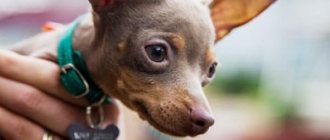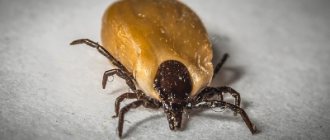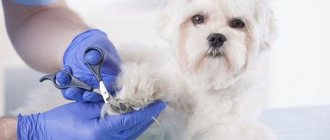Is your dog restless at night? Aging, anxiety and lack of physical activity are some common causes. Here's some help for relaxing (so you can too). After a long day at work, expect a good night's sleep (with or without dogs in bed!). But your dog may have different ideas. Is your dog restless at night? While sleepless nights may be common for new puppies or even some young dogs, restlessness typically goes away as the dog matures.
However, if you notice that your dog is no longer sleeping through the night, constantly changing positions, or pacing around the room or throughout the house, there may be a more serious underlying problem that needs to be addressed. A dog that is restless at night may indicate various age-related or behavioral issues that require moderate intervention.
Psychological causes of restless behavior in dogs
A dog's restless behavior is a signal to be alert and analyze its general condition. It is important to understand that the causes of restless behavior can be physiological and psychological.
For physiological reasons, the dog is anxious due to discomfort. Most often, the “root of the problem” is that the dog cannot sleep properly, suffers from chronic fatigue and lack of self-confidence.
The psychological causes of restless behavior in dogs are very multifaceted and most often complex, so their diagnosis is extremely difficult.
Diagnosis of mental disorders is associated with a number of difficult issues:
- You need to make sure that the dog is completely physically healthy - this is almost impossible.
- It is necessary to carefully track the history and analyze what events preceded changes in behavior.
- It is necessary to carefully analyze the environment, including ecology, climate, quality of the food the dog eats, etc.
The only psychological reason that is commonly used to “denote” restless behavior is stress. Usually, the diagnosis is confirmed or removed after a trial course of sedatives.
Briefly about the main thing
- A dog can whine due to health problems, against the background of psycho-emotional factors, and as a way of communication.
- Bitches after estrus and during false pregnancy can whine with a toy; whining is also observed when overexcited.
- Dogs dream, so they may whine and move their paws while they sleep. This reaction is more common in puppies.
- In order for your pet to stop whining, you need to understand the reasons for this behavior. If necessary, contact a veterinarian.
Does your dog whine towards the apartment? Write in the comments how you deal with this behavior.
Should I worry if my dog is acting restless? First, you need to understand that there are psychological reasons for restless behavior in dogs. Diagnosis of psychological abnormalities is complex and is carried out only if the pet is healthy.
Additional symptoms and their explanation
If your restless behavior is due to physical illness, you may be able to look for additional symptoms.
The dog is rushing about and cannot find a place for itself
If the dog is rushing about and cannot find a place for itself, the reasons may be:
- Stress.
- Sounds that the dog hears but you don’t and/or other irritating factors.
- Phobias.
- Physical pain.
A sudden change in behavior and the appearance of anxiety may be associated with recent stress or very real irritating factors. If you live in an apartment, your dog may suffer from ultrasonic repellers installed by your neighbors. The pet can hear footsteps in neighboring apartments and smell animals.
Note! If a dog of the opposite sex lives in the same building as you, your pet may become very restless during the heat period.
Phobias require long-term correction and constant participation of the owner. Physical pain occurs against the background of diseases, the diagnosis of which must be carried out by a doctor.
The dog is restless at night
If your dog is acting restless at night, the likely causes are:
- Irritating factors in neighboring homes or on the street.
- Lack of physical activity.
- Sluggish chronic diseases, such as arthritis.
Restless behavior at night is often encountered by owners who work and do not devote enough time to walking their dog. After a short morning walk, you go to work, and your bored pet goes to bed. Thus, the dog is at rest all day, goes for a short walk in the evening and has nowhere to put its energy.
Note! Being active at night is a way to attract the owner's attention.
If the animal itches
The animal itches and looks restless for the following reasons:
- Prolonged stress.
- Obvious mental disorders.
- Parasites.
- Allergy.
With obvious mental disorders, the dog scratches the skin until it bleeds. Quite often, you can observe your pet licking its front paws. When the dog is excited, he often and nervously licks his muzzle. Such conditions can be treated with long-term therapy, massage, changes in feeding and walking schedules, and increased attention from the owner.
Your dog may be itchy and anxious if he is infested with fleas, ticks, or other parasites. To protect your pet from unwanted “neighbors,” you need to carry out preventive measures once every 1–3 months, depending on the drug chosen.
The dog is nervous before traveling or in the car
Severe anxiety before traveling or in the car is a natural reaction of a dog. It is important to understand what a pet experiences if its trajectory of movement is not under control.
Note! Before and during travel, veterinarians recommend the use of sedatives.
Breathes frequently with mouth open
When a dog is anxious and frequently breathes with its mouth open, the reason is overexcitement or an increase in body temperature. Overexcitement does not always threaten the pet's health, since the dog can experience strong emotions of a positive nature.
The dog has its tail between its legs
If your dog is anxious and has a tucked tail, the most likely reason is:
- Self-doubt.
- Competitive environment.
- Physical pain that causes the dog to feel insecure.
A tucked tail can indicate distress or a willingness to submit. To determine the real reason, the dog's behavior must be analyzed comprehensively.
The dog hides in a secluded place
If the dog hides in a secluded place and looks worried, the reasons could be:
- Overworked.
- Ailments of any origin.
- Fear of the light.
Photophobia is a symptom of serious disorders in the central nervous system and one of the signs of rabies.
The dog is shaking all over
If the dog is shaking all over, it may have:
- Hypothermia.
- Overwork.
- Fever.
- Strong excitement.
Note that small breed dogs are prone to rapid agitation and tremors. The smaller the dog, the faster it freezes and can shiver even in the warm season.
The dog follows its owner
A dog that worries and follows its owner suffers either from its own anxiety or from the owner’s emotions.
It is important to understand that a dog can experience some events in your life much more emotionally. For example, if there is a quarrel in the house, the dog may chase the person it considers offended. This behavior is driven by basic instincts.
The pet refuses to eat or does not drink
A dog refuses to eat or does not drink, regardless of the reasons for its psychological state, it is necessary to consult a doctor. Fasting is considered safe for an adult dog for 24 hours, and for a puppy for 12 hours.
Remember! If you completely refuse water, your puppy will become severely dehydrated within 12 hours.
The dog is constantly digging for something
If your dog is anxious and constantly “digging” for something, the most likely cause is mental instability. It is important to understand that mental disorder and instability are completely different concepts. In the second case, we mean experiences associated with recent events
Note! For burrowing breeds of dogs, an excited state and the desire to dig holes while walking is natural.
The pet whines, barks for no reason or howls
Is your dog whining, barking for no reason or howling, or looking anxious or irritable? Most likely, the reason is due to irritating factors that you do not feel or do not perceive as possible causes. We talked above about the fact that your pet can smell the heat of another dog and hear sounds that do not bother you.
Loss of appetite
In a lethargic state, your pet may lose its appetite. You should be concerned if he stops going near water or loses weight quickly. This is a symptom not only of stress, but also of anorexia and endocrine diseases. If food refusal is accompanied by stool upset, take your pet to the veterinarian.
- How to call a phone via the Internet for free from a mobile phone and computer
- Vitamins for immunity for adults - rating of complexes
- Superficial gastritis - symptoms, treatment with medications, folk remedies and diet
Factors that provoke restless behavior in dogs
Quite a lot of situations lead to a dog being excited, which can provoke anxiety. Let's look at the factors that provoke restless behavior in dogs.
Anxiety after birth in nursing dogs
Concern after birth in nursing dogs is quite natural, since the young mother is worried about the safety of her offspring. In addition, dogs, like people, have very affectionate feelings towards puppies, so they may become worried when babies squeak and become active.
Anxiety during heat
It's natural to feel anxious during heat, as your dog experiences very real physical discomfort. It is especially difficult for dogs during their first heat, as they feel constant nagging pain in the lower abdomen and a frequent urge to urinate.
Dog worry after surgery
Anxiety after surgery is due to the fact that the dog comes out of anesthesia and feels physical pain. During rehabilitation therapy, the dog is prescribed painkillers, but their dose is calculated so that the pet feels discomfort and spares itself.
Excited state after vaccination
Anxiety after vaccination can be considered a side effect. Despite the loyalty of modern vaccines, which should not cause any side effects or complications, individual reactions are observed quite often.
After vaccination, the dog may experience weakness, suffer from fever, pain at the injection site, and mild nausea. If your pet does not have an acute allergic reaction, there is no need to worry. Side effects resolve without intervention within 24 hours. You can help your dog by providing him with complete peace and comfort.
Frequent triggers of stress
As mentioned above, there can be many causes of stress. Sometimes these are very strange circumstances - rain outside, meeting other dogs, going out into nature, a new leash. Those. situations that should please or at least not bother the dog. Perhaps the pet had a negative experience in the past, which the owner has long forgotten, but which led to a phobia - panic fear that provokes stress. In the case of such a phobia, treatment should be prescribed by an experienced zoopsychologist, because it is almost impossible to cope with the problem on your own. It is not always possible to even find the root of the problem (for example, how can you guess why a dog suddenly began to protest when being taken for a walk?).
But there are situations for which there are universal solutions.
1. For example, if a dog is stressed after a haircut, he needs to befriend the groomer and be given light natural sedatives (herbal, without hormones, according to a veterinarian’s prescription!) before going to the salon. If your dog is afraid of the clipper to the point of panic, you need to gradually accustom it to the buzzing sound or learn how to cut your pet’s hair with scissors.
It’s easy to get used to the machine:
- We place the switched-off machine on our laps and offer the dog a treat. The pet may not come right away, but after a while he will definitely decide. When the dog approaches the person, not paying attention to the machine, we do the same, but now the machine must be turned on;
- When the dog comes up for a treat, ignoring the switched-on machine, several times a day we run the switched-off machine over the pet’s face for a minute. At the same time, we don’t stop feeding tasty pieces. Are you used to it? You can turn on the machine and do the same, moving the back of the blade (without catching the wool, just accustoming it to vibration);
- Are you used to it? We cut off just a little, without ceasing to feed and praise. They cut a centimeter haircut and immediately put the clipper away, not giving the dog time to get scared. We repeated it a couple of hours later. This is a long, but effective and trouble-free method. And no stress!
2. Another common situation is when a dog gets stressed when traveling in a car, even if the trip does not end negatively (if the dog is afraid of cars because previously it was only taken to the veterinarian, you need to fight the fear of the veterinary clinic, not cars). So, the dog is definitely afraid of traveling in a car:
- open the door and sit in the car backwards so that your legs and body remain outside. In this position, half in the car, half outside, we create a positive emotional mood. Treats work better with some dogs, while others relax more quickly during play. You can combine it - take away the chewer, give light commands (sit, voice, give me a paw), treat it with something tasty;
- When the dog learns not to tense up at the sight of a car door opening, we sit in the passenger compartment (in the chair farthest from the open door) and invite the dog inside. The pet must jump on its own (for a toy, following the owner or for a treat - it doesn’t matter, but the owner must already be inside);
- when the dog learns to jump inside fearlessly, you can close the door and sit inside for a while, reinforcing a positive attitude (by playing, giving treats);
- Are you used to the salon? You can drive just a few meters so that the dog does not have time to get scared. It is advisable that the driver is not the owner (at first, a loved one should be next to the frightened dog in order to give it a feeling of security);
Never caress, speak in a soft, sympathetic voice, or pet a dog in a state of panic - your pet may think that he is being praised. This means that this is what you need to do next time, i.e. being afraid is good! Speak in a confident, encouraging voice, maybe a little surprised: “Hey, what are you doing? Everything is fine! I'm near!". You can pat him on the rump or shoulder, shake his paw lightly - to encourage, not encourage.
- meter by meter we accustom the pet to long trips. Eliminate additional stress factors, so the treatment will go faster - accustom the dog to a carrier or box, do not use car “stinkers” (they are stinky for dogs, even if you like the smell), take bedding with you that smells like home, hang a curtain on the door (with pet's side). It’s great if the trip ends with good emotions, for example, a walk in the forest or park.
3. But it’s much more difficult to eliminate stress in a dog when there is a change of owner. Here I can only recommend one thing - a sea of love! The sooner the dog understands that the new pack leader loves and appreciates her no less than the previous owner, the sooner she will feel safe and the sooner she will calm down.
But a person should not feel sorry for the dog, or at least he should not show pity - if the dog feels weak, it will never feel confident (a weak leader means a weak pack). This doesn't mean you have to be tough. Communicate with the dog as if you took it from the street and have no idea that it is stressed - educate it, teach it order (from the position of a reasonable person, not a tyrant!), walk a lot, offer new toys, get to know friendly dogs (better opposite sex). In this situation, time is the best treatment. Some will only need a couple of weeks, while others will experience it for several months. But once the dog feels like part of the pack, it will certainly come out of stress.
4. You need to act in a similar way if the dog is stressed when moving - a lot of love, games and toys, new positive impressions, new friends (both among people and among dogs). To minimize stress, take your favorite toys, bowls, bedding, and ammunition from your old home. Of course, you want to buy everything new for a new home, but it will be easier for your pet to adapt if familiar smells “move” with him.
On the day (or days) of moving, it is better to temporarily give the dog to good friends or relatives whom the pet completely trusts. Noisy movers, running around, taking out furniture, noise and fuss are frequent provocateurs of stress. Of course, you can lock your dog in a back room or a box covered with a thick cloth, but he will still feel the atmosphere of chaos and hear unusual sounds.
In a new place, the dog feels lost. To establish itself in the territory, your pet may start gnawing things or marking corners - do not scold the dog, it now needs your support. Show that you are dissatisfied with her behavior (hands on hips, frowning, slightly leaning forward) - that's enough. Don't raise your voice, don't hit the dog! After a couple of days, if you spend enough time playing and walking, the behavior will return to normal. Also, you should not force feed your dog - a day without food and water will not harm its health (of course, bowls should be freely available).
5. What should you do if your dog is stressed from visiting the veterinary clinic? Even as he approaches, the dog literally hears alarm signals through his nose: “Don’t come here, there is pain, fear and death!” If the pet decides to accept these messages on faith, panic turns off all his logic! Therefore, it is important for the owner to maintain reinforced concrete calm - not to sympathize, not to regret, not to empathize with the dog (this attitude only confirms the pet’s fears). Behave as usual - confident and calm. It’s good if you have the opportunity to often walk past the clinic and sometimes go in and out just like that, without entering the doctor’s office.
Since the treatment process is rarely pleasant, it is important to find a competent, responsible veterinarian. Such a doctor will not act with force just to quickly move on to the next client. He will spend time establishing contacts and try to earn the dog's trust. You can start meeting a doctor not in a clinic, but at home - invite a veterinarian for simple manipulations at home (vaccinate, remove stones, trim claws, treat a shallow wound). Having met a person on his territory, it will be easier for the dog to trust him in a scary, pain-smelling place.
How to calm a dog at home?
In some cases, the owner's direct involvement is required, and sometimes the dog needs to be left alone or isolated.
To calm your dog, try calling your pet, talking to him and tracking his reaction. If the dog calms down, great; if not, use the opposite tactic. Take the dog to a bed and leave it alone, observe the changes. If your pet falls asleep, most likely he is hyperactive because he is suffering from overfatigue.
In case of strong excitement, the dog may show aggression or behave completely inappropriately. The only most gentle method to calm a pet is to isolate it in a separate room and not show emotions in response.
If a dog looks nervous all the time, itches, licks its paws, and does not listen, a comprehensive approach is required to help. At home, you can use standard sedatives (strictly according to the instructions). Another method of help is to increase the duration and activity of walking; the more tired the dog is, the faster it will fall asleep after returning home.
Why does an adult dog whine?
Whining is common in adult dogs. This behavior may be associated with health problems, characteristics of upbringing and behavior, and living conditions. If your pet constantly whines even without obvious reasons, you should contact a dog trainer or veterinarian. Below are the main reasons why a dog cries and cannot find a place for himself.
Health problems
If you notice that the animal is trembling and whining pitifully, this may be due to physiological problems. Possible causes and typical manifestations:
- Diseases of the musculoskeletal system. This may be the destruction of joints due to age or pain after an injury. The dog may whine, limp and move poorly. Most often, the dog takes a comfortable position and finds it difficult to get up and walk. In this case, it is recommended to carry the pet only in a horizontal position.
- Pathologies in the oral cavity. Sharp objects and pieces of food often get stuck in the mouth. If you notice that the animal is breathing frequently or making unusual sounds, you should check the condition of the gums and teeth.
- Ear diseases. Ear mites and common otitis media are more common, causing the dog to scratch its ears and whine. A veterinarian examination is required.
- Indigestion. Characteristic features are refusal to feed, changes in behavior after eating, vomiting and diarrhea. It is recommended to undergo a full diagnostic to accurately determine the cause of this problem.
- Infestation with parasites. If you notice that your dog whines when he poops or rides on his butt after defecation, he may be infected with worms. For treatment and prevention, special anthelmintic drugs are prescribed.
A dog that whines can signal its health to its owner. If this is accompanied by a violation of the usual lifestyle, refusal of water and food, you need to show your pet to a qualified veterinarian.
Behavior problems
The most common reason why a dog whines is its reaction to living conditions, as well as mental characteristics. Whining is most common in restless and anxious pets when the owner leaves. The main factors triggering atypical behavior:
- the bitch's reaction to being weaned from her puppies, which can last up to several weeks. In this case, the dog hardly sleeps at night, walks around the house and makes various sounds;
- loud noises outside the house - thunderstorms, firecrackers, car alarms and gunshots. The dog runs around the apartment, behaves restlessly and hides in the darkness;
- boredom for the owner when the dog is left alone. A similar reaction can occur when kept in an apartment or in an enclosure;
- whining in dogs is also observed after punishment by their owner for any offense or fault. Usually the dog stops whining after reconciliation if the owner offers a treat.
In addition, the dog may whine after any surgical intervention, for example, after sterilization. In this way, the animal demonstrates discomfort and pain. Often, bitches whine after estrus, which is caused by changes in hormonal levels; normally, this behavior goes away within 1-2 days.
Behavior driven by instincts
Dogs are hunters by nature, and this quality manifests itself to varying degrees in different breeds. If you notice that the dog is thrashing around and whining, then perhaps he has noticed the prey, but cannot catch it. This problem is often observed in dogs that spend a lot of time on the balcony or in an enclosure. Overexcitation from the sight of birds, cats and other animals running nearby can persist even after castration in male dogs.
Psycho-emotional factors
A common reason why a dog whines. In this way, animals express their emotions, reactions to the owner and external factors. It could be joy, excitement, fear or worry. Whining can be triggered by various reasons:
- the appearance of a child or a new animal in the house;
- boredom of the owner when they are left alone all day;
- reaction to returning after a walk;
- dreams (when a dog whines in his sleep).
If the dog is shaking with excitement and cannot calm down for a long time, you need to offer it a treat, pat it a little at the withers or stroke it behind the ears. Some dogs begin to be cunning - they whine to beg for food or a walk. For example, a dog sits on its hind legs and looks straight into the eyes, making various sounds. This behavior should be stopped by expressing dissatisfaction and reprimanding your pet.
Weaning methods
Let's look at how to stop a dog from whining if it is not caused by pain or a painful condition. You can use various techniques so that the dog stops making drawn-out plaintive sounds, irritating household members and neighbors. There are several effective techniques.
Ignoring
By whining, the puppy is trying to attract attention. If you constantly react and try to calm him down, he will take advantage of it. In this case, the whining will never stop. Ignoring it usually helps, and over time the squealing will stop. A good place to start is by placing your puppy's bedding next to your bed so he knows he's not alone. Over time, you should gradually move it away until it is where it should be. The main thing is to remain calm and never reward your dog when he whines. The best way out is to completely ignore or ban.
Ban
If, with age, the dog behaves restlessly (especially when left alone) or whines at night, then you should start weaning it using the “fu” command. As soon as she starts whining or squealing, go up to her, give her a command and lightly slap her on the rump. If the whining stops for a short time, you should approach, praise and give a treat. If the dog's yelping resumes, remain calm and repeat the exercise until the effect is achieved.
Walk before bed
Before going to bed, it is recommended to take your pet for a walk and then feed him, making sure that he does not overeat. A well-fed and well-fed dog should sleep peacefully all night.
Distraction and play
If the puppy does not want to sleep at night, then you should put your favorite toys or familiar things next to him. By being distracted by them, he will stop whining and fall asleep unnoticed. It is also recommended to take toys or teeth sharpeners with you when traveling.
It is worth remembering that you should never resort to physical punishment. Such actions can only worsen the situation. Fear or aggression are bad helpers, and forming a relationship with a four-legged friend should not be built on their basis.











